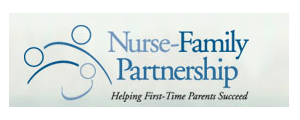We have published a more recent list of top charities. See our most recent list.
About these charities
GiveWell is devoted to finding charities that you can give to with confidence that your donation is truly changing lives.
We believe such charities are rare. To date, we've evaluated 136 (full list here) and identified 4 that we confidently recommend. You can read the full details of how we selected each by clicking on its name.
If you would like to donate to one, you can do so using the appropriate "Donate now through Network for Good" link. Please note that the entire donation process is handled by Network for Good, a service that has processed over $100 million in donations since 2001. GiveWell has no involvement in the donation process, and collects no fees on it.
Don't see your favorite cause?
GiveWell is just beginning our work on finding great charities. We listen to people like you to decide what to research next. Tell us what you think.
- Click here for a complete list of the 136 charities we've evaluated.
- Click here for an overview of our research process and criteria.
- Click a top charity's name (below) to read our full report on it.
International aid


U.S. equality of opportunity
 The Nurse-Family Partnership program consists of sending registered nurses to perform regular visits to low-income mothers, both during and immediately after pregnancy (up until the child's second birthday), in order to counsel them on issues such as birth spacing, child nutrition, and maintaining a safe and supportive environment. Repeated studies of this program have shown lasting differences between those who did and didn't participate in the program (even when participants were chosen by lottery).
The Nurse-Family Partnership program consists of sending registered nurses to perform regular visits to low-income mothers, both during and immediately after pregnancy (up until the child's second birthday), in order to counsel them on issues such as birth spacing, child nutrition, and maintaining a safe and supportive environment. Repeated studies of this program have shown lasting differences between those who did and didn't participate in the program (even when participants were chosen by lottery).
The  Knowledge is Power Program is a network of charter schools across the U.S. focusing on improving academic outcomes for disadvantaged youth. All students in a school's vicinity are eligible for admission, and tuition is free. KIPP takes the position that disadvantaged students are behind from the day they enter, and need schools that are focused on going above and beyond a “normal” education. Our analysis implies that KIPP is having a real effect on academic outcomes, showing significant gains throughout KIPP's national network of schools.
Knowledge is Power Program is a network of charter schools across the U.S. focusing on improving academic outcomes for disadvantaged youth. All students in a school's vicinity are eligible for admission, and tuition is free. KIPP takes the position that disadvantaged students are behind from the day they enter, and need schools that are focused on going above and beyond a “normal” education. Our analysis implies that KIPP is having a real effect on academic outcomes, showing significant gains throughout KIPP's national network of schools.
What do you get for your dollar? An overview
| Top recommended organizations | Cost | Impact | |
|---|---|---|---|
| Developing-world health | - Population Services International - Partners in Health |
$100-3,500 per life saved | Improve health, save lives |
| Developing-world poverty | None | - | Unclear, if any |
| Early childhood care and education (U.S.) | Nurse-Family Partnership | $10,000 per child served | Increase academic performance and reduce criminal behavior |
| K-12 Education (U.S.) | Knowledge is Power Program | $20,000 per student (including state education funds) | Improve academic performance |
| Employment Assistance (NYC) | The HOPE Program | $10,000 per client served | Unclear, if any |
